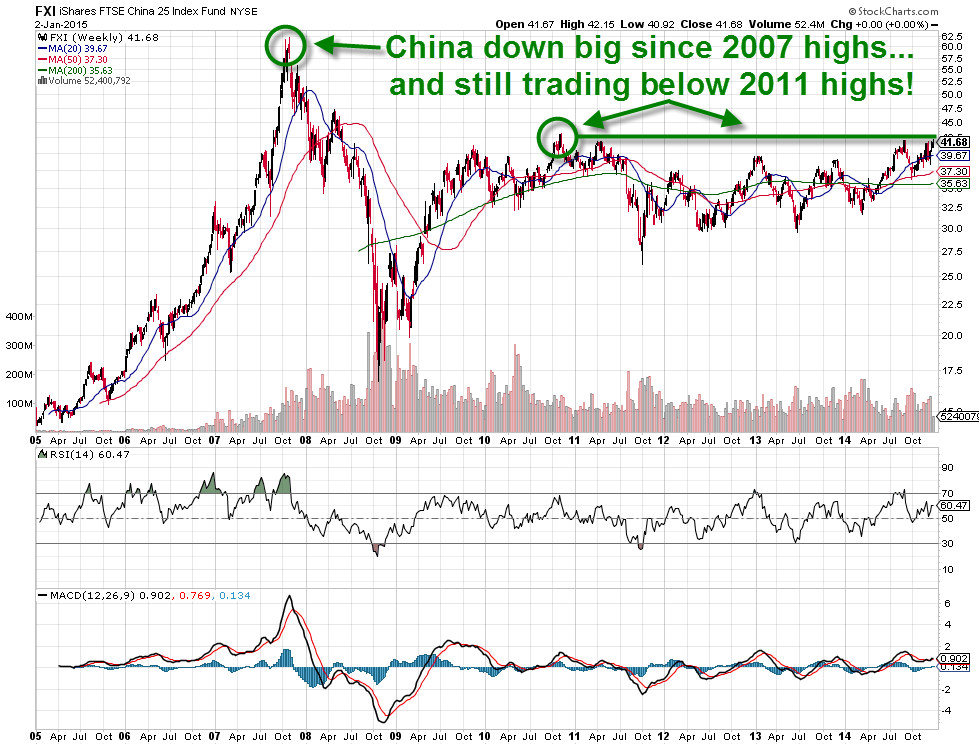The Next Bubble Has Started To Burst
There will always be boom and bust cycles within an economy. However, on occasion, the cycle turns into inflated bubbles. These bubbles have been fueled by too easy of monetary policies from global central banks such as the U.S. Federal Reserve, Bank of Japan, European central bank, etc. They are often further inflated through financial engineering (e.g., relaxed lending practices, exotic instruments, leverage, etc.). Finally, the greed of those having missed out on the majority of the run and believing the “hype” jump into the assets, which further drives the valuations to insane levels.
Some recent bubbles include:
- The Dot-Com Bubble: Speculative bubble covering roughly 1997-2000
- The Housing Bubble: Speculative bubble covering roughly 2004-2006.
The Dot-Com Bubble followed the creation and explosive growth of the Internet. The new Internet-based group of companies were often referred to as the dot-coms. Then came the late arriving companies that needed only to add an “e” prefix to their name or a “.com” to the end and their stock prices exploded higher in price. Of course, they lacked earnings, sales growth, revenues and other critical elements to maintaining viable businesses.
The Housing Bubble followed shortly thereafter. This bubble was fueled by Wall Street, mortgage brokers, Alan Greenspan (Federal Reserve) and greedy home buyers. The financial engineering created low short-term interest rates, exotic loan structures, all sorts of adjustable rate mortgages, interest-only loans and relaxed standards for mortgages. Once again, the general public arrived too late to the party and paid the price when they chased the “house flipping” craze.
So, what in this market is similar to the Dot-Com and Housing Bubbles?
Most commodities traded to their upper extremes back in 2007 on the back of Chinese demand. The growth in China, however, was something of a hoax and completely unsustainable. In a command economy like China, a country can simply put “shovels in the ground” and make its GDP whatever it wants it to be. So, that is exactly what China did.
Even though there was not demand for massive cities, China built them anyway. China created office buildings, single family homes, condos, transit and much more. However, due to the fact that there was not demand, these cities have now become “ghost cities” – and are likely to remain that way for years to come. So, did China show stellar growth? Absolutely! However, what do they have to show for it now?
China’s total bank debt has grown from $14 trillion in 2008 to more than $26 trillion today. This is more than double the total size of the U.S. commercial banking sector – and the U.S. is the largest economy in the world! To support this massive growth in credit, China’s central bank has more than doubled its money supply by…wait for it…printing more money! Does any of this sound familiar?
Economists warn the risks of a full-blown Chinese banking crisis are rising. If that happens, then the effects will be felt around the world. Oxford economists ran numbers in their computer models and came up with some interesting scenarios. While they peg the odds of a “worst case scenario” playing out at only around 10%, it is still pretty scary to even think about.
Here’s how the Oxford economist see the worst case scenario playing out:
The start would begin when house prices in China fall 24% in 2015 and another 27% in 2016. That would trigger a massive wave of bad loans as developers default. This would tighten credit, driving up interest rates and forcing Chinese bank defaults. Based on the Oxford computer models of the worst case scenario, the Shanghai stock index falls 60% in 2015 and another 15% in 2016.
Would the U.S. survive unscathed? Not a chance! In fact, our Investview Trading Team has been telling our Investview members to avoid investing in China and related commodities and markets since 2011. We would argue this has been one of our best calls ever and we feel that this might be only the beginning. Emerging markets such as China, Brazil, Russia, and others have traded down since 2011 – even as the U.S. markets have surged to new all-time highs. Commodities such as coal, copper, steel, iron ore, and the related stocks have collapsed due to the “artificial Chinese demand” disappearing as described earlier!
The chart below shows the level of underperformance for China. We expect that to continue for years to come. You’ve been warned: The next bubble has started to burst…get out of the way!

Disclosure: None




Very interesting read, especially the bit on "artificial demand." Since an under-performing Chinese economy would surely affect the U.S., what should be done about it?